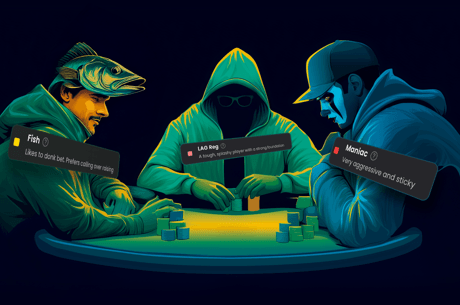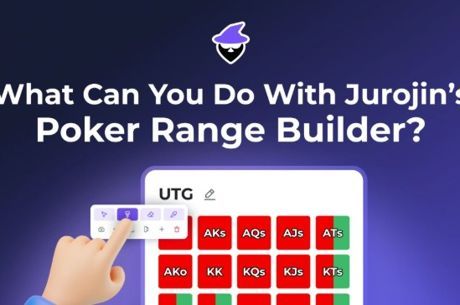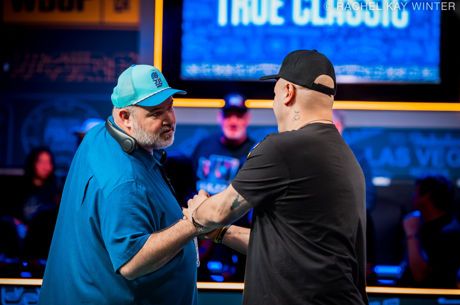The Winning Secret to Seat Selection

You have to make a ton of decisions correctly in order to end up with a winning poker session. Many of those decisions are made before you see the first cards. For instance: Are your bankroll and physical and mental state healthy enough to be playing at all? What game and stakes should you tackle? Of the tables available, which has the most profitable-looking game?
But one such decision tends to get overlooked in terms of strategic importance — where you sit.
Of course, it is often the case that you don’t have a choice with that decision. One seat opens up, your name is called, and you take it. But you don’t have to stay there. Ask for a seat-change button as soon as you sit down, so that you have the right of first refusal the next time another place becomes available.
Strategic considerations will frequently dictate a subsequent move. Most classically, you may want to sit to the immediate left of the table maniac, the player who is pushing the action, so that you have a positional advantage over him as often as possible.
But for now, let’s assume that the players are all roughly similar so that is not a factor. Where should you try to sit, if you are given free choice?
Sometimes this decision relates to comfort. If you have restricted vision of any kind, you may want to sit directly opposite the dealer, so that you have the closest view of the cards on the table. On the other hand, the seats on the ends of the table have more elbow and foot room, which is nice to have.
I’m in the minority on this, but in terms of being comfortable I have a strong preference for the two seats on either side of the dealer. There are lots of reasons for why I have this preference:
- No other seats have as much elbow and foot room as those two do.
- I know a lot of the dealers, and proximity makes it easier to chat quietly with them.
- If you are sitting next to the dealer and just one other player, instead of two players, you cut in half your chance of being stuck next to somebody who is obnoxiously smelly, chatty, loud, or invasive of your personal space.
- You never have to stretch to push your chips to where the dealer can reach them, nor toss your cards to get them back to the dealer.
- Poker rooms tend to position tables so that all of the dealers are facing the main desk, so if you’re next to the dealer, you’re facing that way, too, and can keep an eye on what’s happening, who’s coming and going, and anything else of interest.
- When the dealer looks away, it’s easy to reach into his tray and swipe a few chips.
- I was just kidding on that last one. Relax!
But I started this article talking about strategic advantages when it comes to choosing a seat, not comfort. For strategic advantage, I submit that Seat One — that is, the one to the immediate left of the dealer — is the best. Here’s why.
It’s always advantageous to know in advance what the player to your left is going to do. For example, if you knew that he had pocket aces, you would change your mind about trying to steal the blinds with a raise while holding 7x2x-offsuit. Conversely, when you’re one off the button, if you could know before taking your turn that the button was going to fold, it would be like having the button yourself for the second time in a row — a powerful advantage.
In fact many players telegraph what they’re going to do before it’s their turn, especially when it comes to preflop decisions. If they’re going to fold, they have their cards in hand with the wrist cocked, ready to fire them into the muck. If they’re going to stay in, they’ll cap their cards. If they’re going to raise, they’ll be counting out chips. Even if you can’t get a read on specific actions, watching the player to your left as he peeks at his hole cards may give you some general indication of whether he likes or dislikes them.
All such observations are most easily made from Seat One. That’s because the curve of the table puts the player in Seat Two into your field of view without having to crane your neck in a gesture so obvious that he’ll notice that you’re gawking. If he knows he’s being watched, he may become self-conscious, and stop giving away his actions in advance.
Admittedly, the chair two to the right of the dealer (either Seat Eight or Seat Nine, depending on whether the table is nine-handed or ten-handed), has a similar vantage point on the seat to its left. But Seat One still takes the strategic edge, because while you want to see, you don’t want to be seen. In case you’re leaking tells of your own, you don’t want the player to your right to be able to pick up on them. With the dealer on your right, it is difficult for the player to the dealer’s right to be watching you surreptitiously.
So if you have no strong reason to do otherwise, I suggest trying to get yourself into Seat One, for reasons of both comfort and strategic advantage. That way, you put yourself literally in the best position to make all of the myriad subsequent decisions optimally.
Robert Woolley lives in Asheville, NC. He spent several years in Las Vegas and chronicled his life in poker on the “Poker Grump” blog.
Get all the latest PokerNews updates on your social media outlets. Follow us on Twitter and find us on both Facebook and Google+!









